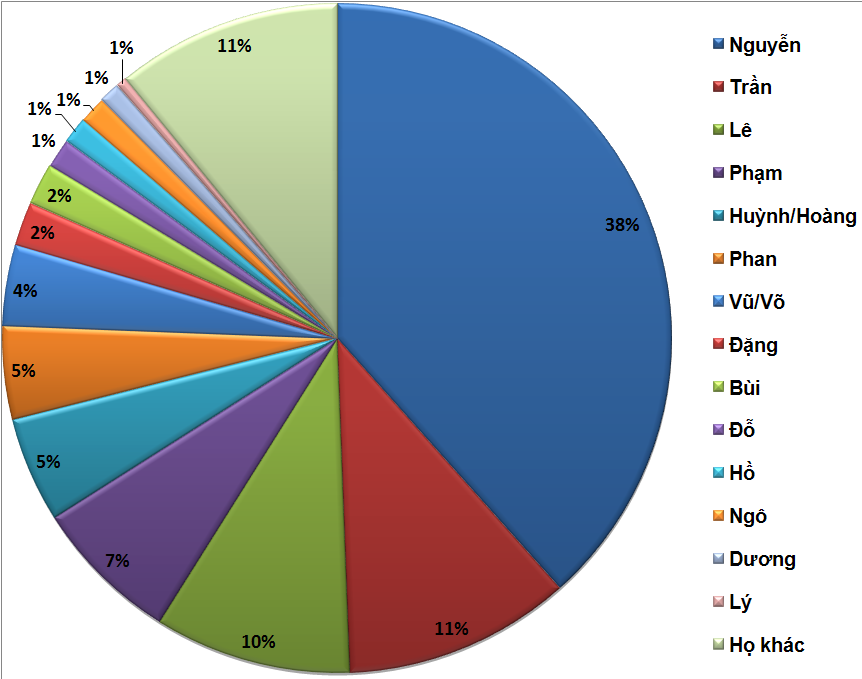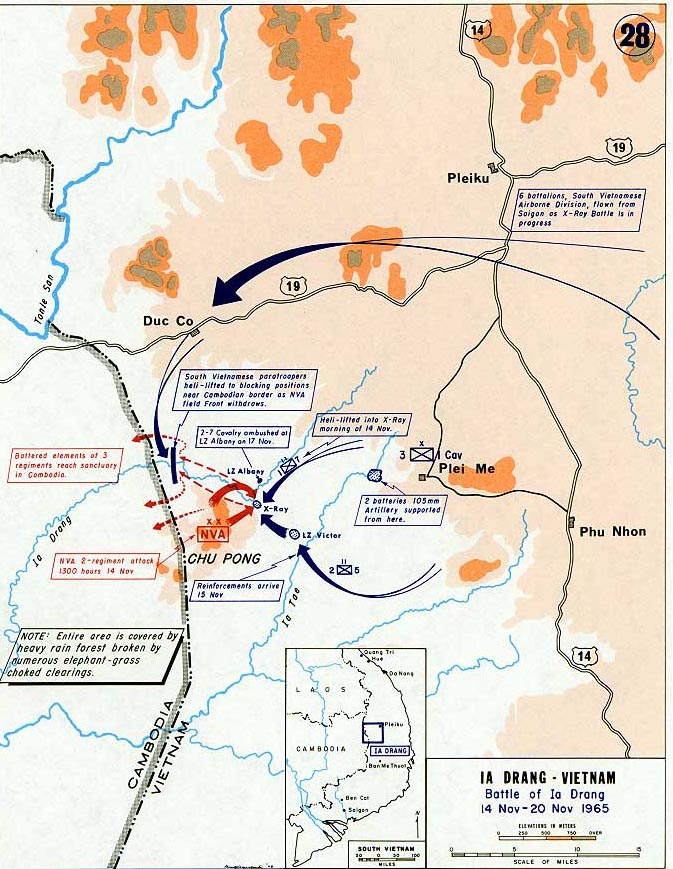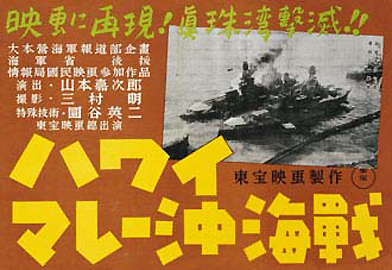|
We Were Soldiers
''We Were Soldiers'' is a 2002 American war film written and directed by Randall Wallace and starring Mel Gibson. Based on the book '' We Were Soldiers Once… and Young'' (1992) by Lieutenant General (Ret.) Hal Moore and reporter Joseph L. Galloway, it dramatizes the Battle of Ia Drang on November 14, 1965. Plot In 1954, the French Army's Group Mobile 100, on patrol during the First Indochina War, is ambushed by Viet Minh forces. Viet Minh commander Nguyen Huu An orders his soldiers to "kill all they send, and they will stop coming". Eleven years later in 1965, the United States is fighting the Vietnam War. US Army Lieutenant Colonel Hal Moore is chosen to train and lead a battalion. After arriving in Vietnam, he learns that an American base has been attacked and is ordered to take his 400 men after the enemy and eliminate the North Vietnamese attackers; intelligence has no idea of the number of enemy troops. Moore leads a newly-created air cavalry unit into the Ia Dr ... [...More Info...] [...Related Items...] OR: [Wikipedia] [Google] [Baidu] |
Randall Wallace
Randall Wallace (born July 28, 1949) is an American screenwriter, film director and producer who came to prominence by writing the screenplay for the historical drama film ''Braveheart'' (1995). His work on the film earned him a nomination for the Academy Award for Best Original Screenplay and a Writers Guild of America Award in the same category. He has since directed films such as '' The Man in the Iron Mask'' (1998), '' We Were Soldiers'' (2002), '' Secretariat'' (2010) and '' Heaven Is for Real'' (2014). Early life and education Born in Jackson, Tennessee, he lived in Memphis and Henderson County, Tennessee before moving to Virginia. Wallace began writing stories at the age of seven. He graduated from E.C. Glass High School in Lynchburg, Virginia and attended Duke University, where he studied Russian, religion, and literature and was a member of Lambda Chi Alpha fraternity. He put himself through a graduate year of seminary by teaching martial arts. Wallace holds a bl ... [...More Info...] [...Related Items...] OR: [Wikipedia] [Google] [Baidu] |
Paramount Pictures
Paramount Pictures Corporation, commonly known as Paramount Pictures or simply Paramount, is an American film production company, production and Distribution (marketing), distribution company and the flagship namesake subsidiary of Paramount Global. It is the sixth-oldest film studio in the world, the second-oldest film studio in the United States (behind Universal Pictures), and the sole member of the Major film studio, "Big Five" film studios located within the city limits of Los Angeles. In 1916, film producer Adolph Zukor put 24 actors and actresses under contract and honored each with a star on the logo. In 1967, the number of stars was reduced to 22 and their hidden meaning was dropped. In 2014, Paramount Pictures became the first major Hollywood studio to distribute all of its films in digital form only. The company's headquarters and studios are located at 5555 Melrose Avenue, Hollywood, California. The most commercially successful film franchises from Paramount Pictu ... [...More Info...] [...Related Items...] OR: [Wikipedia] [Google] [Baidu] |
US Army
The United States Army (USA) is the primary land service branch of the United States Department of Defense. It is designated as the Army of the United States in the United States Constitution.Article II, section 2, clause 1 of the United States Constitution (1789).See alsTitle 10, Subtitle B, Chapter 301, Section 3001 It operates under the authority, direction, and control of the United States secretary of defense. It is one of the six armed forces and one of the eight uniformed services of the United States. The Army is the most senior branch in order of precedence amongst the armed services. It has its roots in the Continental Army, formed on 14 June 1775 to fight against the British for independence during the American Revolutionary War (1775–1783). After the Revolutionary War, the Congress of the Confederation created the United States Army on 3 June 1784 to replace the disbanded Continental Army.Library of CongressJournals of the Continental Congress, Volume 27/ref> Th ... [...More Info...] [...Related Items...] OR: [Wikipedia] [Google] [Baidu] |
Vietnam War
The Vietnam War (1 November 1955 – 30 April 1975) was an armed conflict in Vietnam, Laos, and Cambodia fought between North Vietnam (Democratic Republic of Vietnam) and South Vietnam (Republic of Vietnam) and their allies. North Vietnam was supported by the Soviet Union and China, while South Vietnam was supported by the United States and other anti-communist nations. The conflict was the second of the Indochina wars and a proxy war of the Cold War between the Soviet Union and US. The Vietnam War was one of the postcolonial wars of national liberation, a theater in the Cold War, and a civil war, with civil warfare a defining feature from the outset. Direct United States in the Vietnam War, US military involvement escalated from 1965 until its withdrawal in 1973. The fighting spilled into the Laotian Civil War, Laotian and Cambodian Civil Wars, which ended with all three countries becoming Communism, communist in 1975. After the defeat of the French Union in the First Indoc ... [...More Info...] [...Related Items...] OR: [Wikipedia] [Google] [Baidu] |
Nguyen Huu An
Nguyễn (阮) (sometimes abbreviated as Ng̃) is the most common surname of the Vietnamese people. Outside of Vietnam, the surname is commonly rendered without diacritics as ''Nguyen''. By some estimates 30 to 39 percent of Vietnamese people bear this surname.Lê Trung Hoa, ''Họ và tên người Việt Nam'', NXB Khoa học - Xã hội, 2005 Origin and usage is the transcription of the Sino-Vietnamese pronunciation of the character 阮, which originally was used to write a name of a state in Gansu or ruan, an ancient Chinese instrument. The same Chinese character is often romanized as in Mandarin and as in Cantonese. The first recorded mention of a person surnamed Nguyễn is a description dating AD 317, of a journey to Giao Châu undertaken by Eastern Jin dynasty officer Nguyễn Phu and his family. Many events in Vietnamese history have contributed to the name's prominence. In 1232, after usurping the Lý dynasty, Trần Thủ Độ forced the descendants of the ... [...More Info...] [...Related Items...] OR: [Wikipedia] [Google] [Baidu] |
Viet Minh
The Việt Minh (, ) is the common and abbreviated name of the League for Independence of Vietnam ( or , ; ), which was a Communist Party of Vietnam, communist-led national independence coalition formed at Pác Bó by Hồ Chí Minh on 19 May 1941. Also known as the Việt Minh Front (), it was created by the Indochinese Communist Party (ICP) as a united front to achieve the independence of the North Vietnam, Democratic Republic of Vietnam. The was previously formed by Hồ Học Lãm in Nanjing, China, at some point between August 1935 and early 1936, when Vietnamese nationalist parties formed an anti-imperialist united front. This organization soon lapsed into inactivity, only to be taken over by Hồ Chí Minh and the ICP in 1941. They presented the organization as inclusive of political groups, with a founding charter more nationalist than communist. It exhorted "soldiers, workers, peasants, intellectuals, civil servants, merchants, young men and women" to overthrow "Fren ... [...More Info...] [...Related Items...] OR: [Wikipedia] [Google] [Baidu] |
First Indochina War
The First Indochina War (generally known as the Indochina War in France, and as the Anti-French Resistance War in Vietnam, and alternatively internationally as the French-Indochina War) was fought between French Fourth Republic, France and Việt Minh (Democratic Republic of Vietnam), and their respective allies, from 19 December 1946 until 21 July 1954. Việt Minh was led by Võ Nguyên Giáp and Hồ Chí Minh. Most of the fighting took place in Tonkin in Northern Vietnam, although the conflict engulfed the entire country and also extended into the neighboring French Indochina protectorates of Kingdom of Laos, Laos and French protectorate of Cambodia, Cambodia. At the Potsdam Conference in July 1945, the Allied Combined Chiefs of Staff decided that Indochina south of 16th parallel north, latitude 16° north was to be included in the Southeast Asia Command under British Louis Mountbatten, 1st Earl Mountbatten of Burma, Admiral Mountbatten. On V-J Day, September 2, Hồ Chí Min ... [...More Info...] [...Related Items...] OR: [Wikipedia] [Google] [Baidu] |
Battle Of Mang Yang Pass
The Battle of Mang Yang Pass (also known as the Battle of An Khê or the Battle of Đắk Pơ) was one of the last battles of the First Indochina War between the French Union and Việt Minh which took place from 24 to 29 June 1954. The battle was one of the bloodiest defeats of the French Union forces, along with the battle of Battle of Dien Bien Phu, Dien Bien Phu shortly beforehand. Background ''Groupement Mobile No. 100'' ("Group Mobile 100" or G.M. 100) was a regimental task force unit of the French Far East Expeditionary Corps which was assembled as a convoy. It included the elite veteran UN ''French Battalion in the Korean War, Bataillon de Corée'' who fought in the Korean War at Battle of Chipyong-ni, Chipyong-ni, First and Second Battle of Wonju, Wonju and Battle of Heartbreak Ridge, Heartbreak Ridge. It had already suffered a defeat at the Siege of Đắk Đoa in February 1954. In addition, anxious to avoid a second disaster like the Battle of Dien Bien Phu, siege at D ... [...More Info...] [...Related Items...] OR: [Wikipedia] [Google] [Baidu] |
French Far East Expeditionary Corps
The French Far East Expeditionary Corps (, CEFEO) was a colonial expeditionary force of the French Union Army that was initially formed in French Indochina in 1945 during the Pacific War. The CEFEO later fought and lost in the First Indochina War against the communist Viet Minh rebels. It did not include the Vietnamese National Army although Vietnam was part within the French Union and fought in the war, because Vietnam gained independence and had its own army. The CEFEO was largely made up of voluntarily-enlisted indigenous tirailleurs from the French Union colonial or protectorate territories, one exception being the French Foreign Legion, which consisted mainly of volunteers from Europe and the rest of the world. Metropolitan conscripts did not serve in the CEFEO unless they volunteered to do so. Less than half of the total personnel of the Corps were French professional soldiers, mostly serving with paratrooper, artillery and other specialist units. History Compositio ... [...More Info...] [...Related Items...] OR: [Wikipedia] [Google] [Baidu] |
Battle Of Ia Drang
The Battle of Ia Drang (, ; in English ) was the first major battle between the United States Army and the People's Army of Vietnam (PAVN), as part of the Pleiku campaign conducted early in the Vietnam War, at the eastern foot of the Chu Pong Massif in the central highlands of Vietnam, in 1965. It is notable for being the first large scale helicopter air assault and also the first use of Boeing B-52 Stratofortress strategic bombers in a tactical support role. Ia Drang set the blueprint for the Vietnam War with the Americans relying on air mobility, artillery fire and close air support, while the PAVN neutralized that firepower by quickly engaging American forces at very close range. Ia Drang comprised two main engagements, centered on two helicopter landing zones (LZs), the first known as LZ X-Ray, followed by LZ Albany, farther north in the Ia Drang Valley. LZ X-Ray involved the 1st Battalion, 7th Cavalry Regiment and supporting units under the command of Lieutenant Colonel H ... [...More Info...] [...Related Items...] OR: [Wikipedia] [Google] [Baidu] |
War Film
War film is a film genre concerned with warfare, typically about navy, naval, air force, air, or army, land battles, with combat scenes central to the drama. It has been strongly associated with the 20th century. The fateful nature of battle scenes means that war films often end with them. Themes explored include combat, survival and escape, camaraderie between soldiers, sacrifice, the futility and inhumanity of battle, the effects of war on society, and the moral and human issues raised by war. War films are often categorized by their milieu, such as the Korean War; the most popular subjects are the World War II, Second World War and the American Civil War. The stories told may be fiction, historical drama, or biographical. Critics have noted similarities between the Western (genre), Western and the war film. Nations such as China, Indonesia, Japan, and Russia have their own traditions of war film, centred on their own revolutionary wars but taking varied forms, from action an ... [...More Info...] [...Related Items...] OR: [Wikipedia] [Google] [Baidu] |
British Board Of Film Classification
The British Board of Film Classification (BBFC) is a non-governmental organization, non-governmental organisation founded by the British film industry in 1912 and responsible for the national classification and censorship of films exhibited at cinemas and video works (such as television programmes, Trailer (promotion), trailers, adverts, public information/campaigning films, menus, bonus content, etc.) released on physical media within the United Kingdom. It has a statutory requirement to classify all video works released on VHS, DVD, Blu-ray Disc, Blu-ray (including Blu-ray 3D, 3D and Ultra HD Blu-ray, 4K UHD formats), and, to a lesser extent, some video games under the Video Recordings Act 1984. The BBFC was also the designated regulator for the UK age-verification, UK age-verification scheme, which was abandoned before being implemented. History and overview The BBFC was established in 1912 as the British Board of Film Censors, under the aegis of the Incorporated Associa ... [...More Info...] [...Related Items...] OR: [Wikipedia] [Google] [Baidu] |






